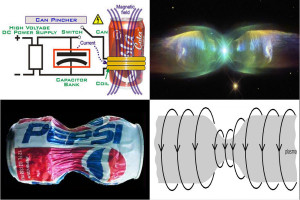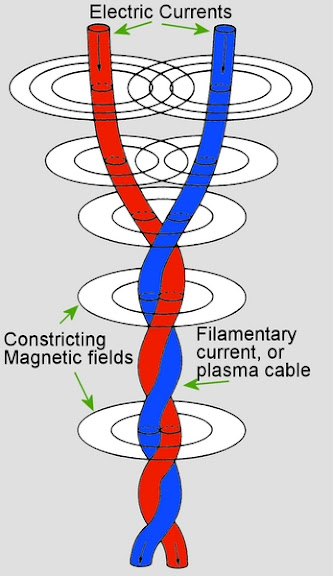
Called the Veil Nebula, the debris is one of the best-known supernova remnants, deriving its name from its delicate, draped filamentary structures ... This close-up look unveils wisps of gas ... The nebula lies along the edge of a large bubble of low-density gas ... In this image, red corresponds to the glow of hydrogen, green from sulfur, and blue from oxygen
A few thin, crisp-looking, red filaments arise after gas is swept into the shock wave at speeds of nearly 1 million miles an hour, so fast that it could travel from Earth to the moon in 15 minutes.
Veil Nebula Supernova Remnant | Hubble NASA
Gravity or Kristian Birkeland plasmoids?
Weakest force Gravity doing something amazing or Kristian Birkeland filaments of current and plasma, plasmoids - electromagnetic phenomena doing something equalling naturally fantastic.
Despite the nebula’s complexity and distance from us, the movement of some of its delicate structures is clearly visible - particularly the faint red hydrogen filaments. In this image, one such filament can be seen as it meanders through the middle of the brighter features that dominate the image
... Hidden amongst these bright, chaotic structures lie a few thin, sharply edged, red coloured filaments. These faint hydrogen emission features are created through a totally different mechanism than that which generates their fluffy red companions
Revisiting the Veil Nebula | Space Telescope
 A plasma z-pinch, also known as zeta pinch (comes from or related to Bennett pinch, theta-pinch) is a very important plasma/electromagnetic mechanism for the Electric Universe theory. Also for Plasma Cosmology and standard science.
A plasma z-pinch, also known as zeta pinch (comes from or related to Bennett pinch, theta-pinch) is a very important plasma/electromagnetic mechanism for the Electric Universe theory. Also for Plasma Cosmology and standard science.
















